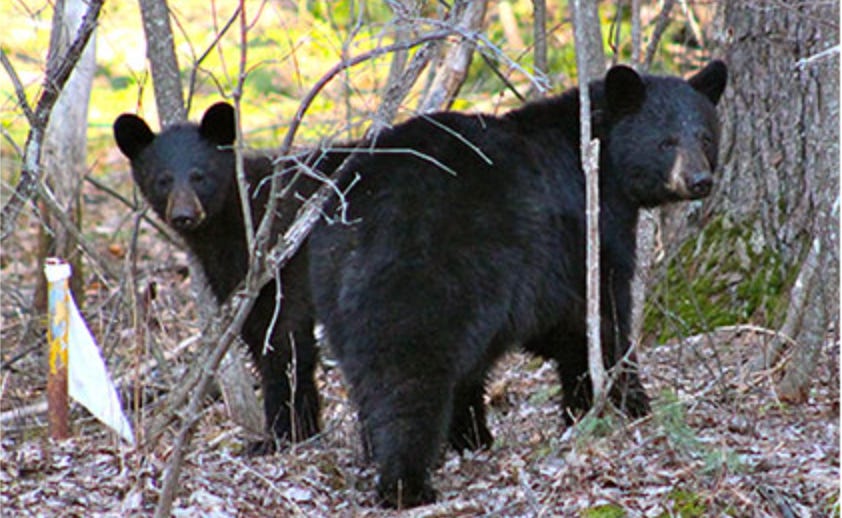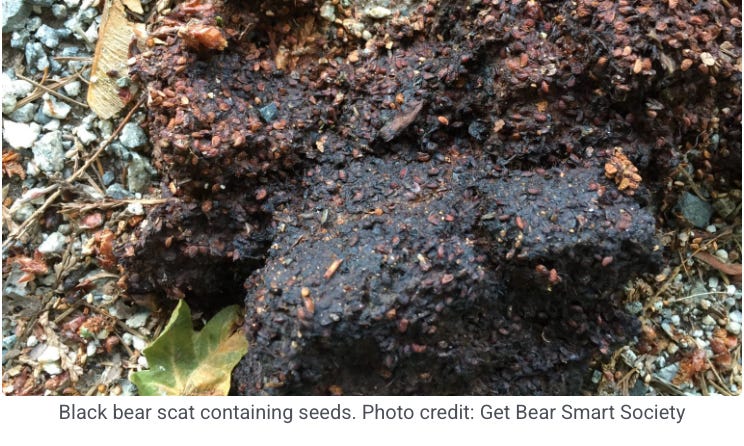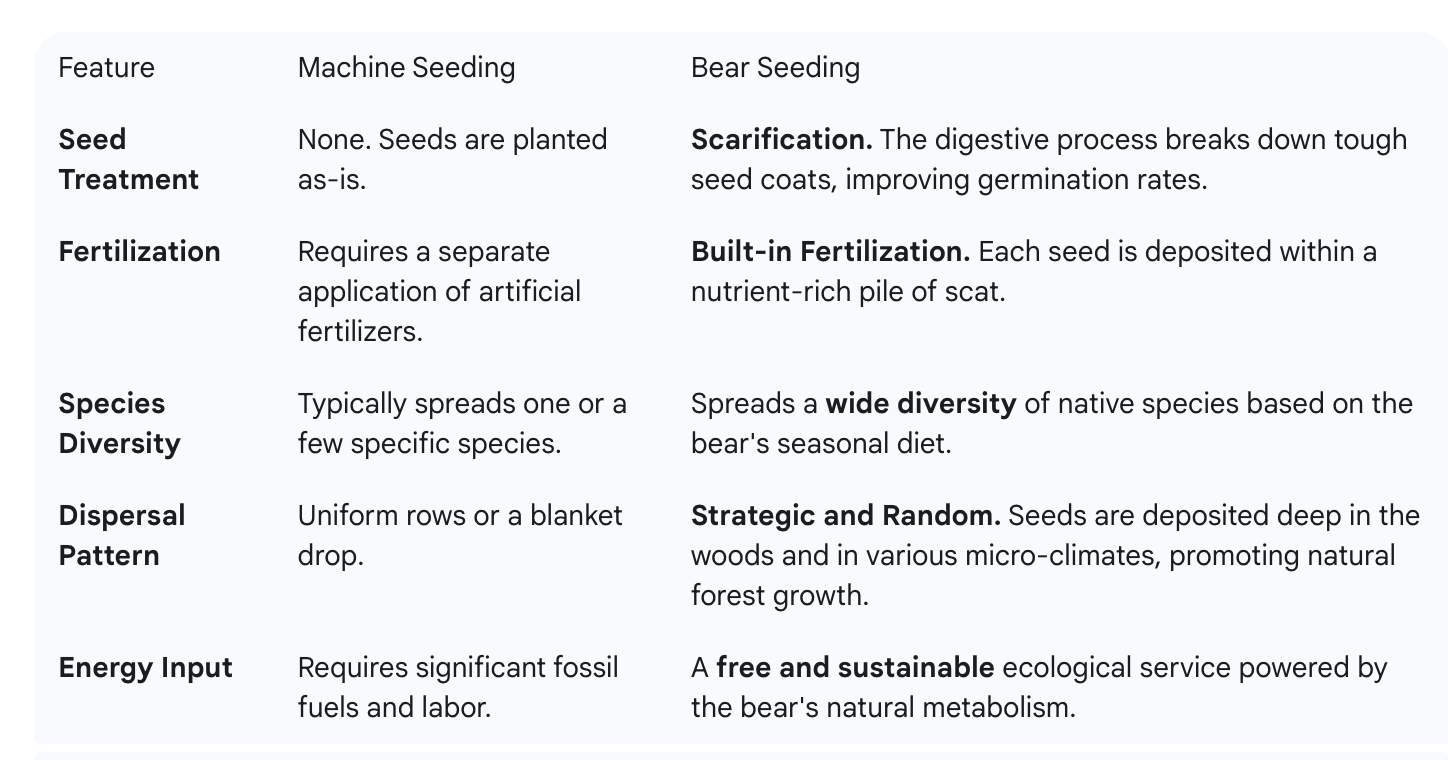It's the Ultimate Agricultural Tool That Can Disperse 200,000 Seeds per Hour, Doesn't Need a Barn, and Won't Rust
The Vermont black bear can do things your John Deere wouldn't even try.
Vermont's black bear population is growing, and the state's Fish & Wildlife Department is conducting a multi-year study to understand how and where they are thriving. Using GPS collars and analyzing den sites, biologists are gathering crucial data to manage the population effectively. While much of the discussion around bears often centers on preventing conflicts, this research also highlights their essential, though often overlooked, role in keeping our forests healthy.
When bears make the news, the stories often follow a familiar pattern. We hear about hunting seasons, or we see photos of a dumpster tipped over or a shed door smashed in pursuit of birdseed or garbage. These conflicts are real and require careful management. But for the vast majority of their lives, when they are unseen deep in the woods, these powerful animals are performing incredible services that are essential to the health of the Vermont landscape.
The Ultimate Agricultural Tool
It can disperse over 200,000 seeds per hour, fertilizes as it goes, needs no barn, and won't rust. What is it? The American black bear. While it might seem strange to think of a bear as a tool, this powerful animal performs complex ecological services that are vital to the health and resilience of Vermont's landscape.
Master Gardeners of the Green Mountains
Bears are arguably the most effective seed dispersers in our forests. As omnivores, a huge portion of their late-summer and fall diet consists of fruits and berries. According to the North American Bear Center, a single bear can consume up to 30,000 berries a day. They eat everything from wild cherries and elderberries to raspberries, blackberries, and serviceberries.
As bears travel across their large home ranges, they disperse the seeds from these fruits in their droppings, a process known as endozoochory. This natural planting method is far more sophisticated than any human technology, as it scarifies the seed coating in the digestive tract to encourage sprouting and deposits the seed in a nutrient-rich pile of natural fertilizer. This service helps ensure the propagation and genetic diversity of many native plants that feed a wide array of wildlife.
Here's how a bear's natural planting process compares to a machine:
Engineers and Janitors of the Forest
Beyond planting seeds, the daily activities of bears actively improve the forest floor.
Ecosystem Engineers: When a bear tears apart a rotting stump or log in search of ants and grubs, it's doing more than just finding a meal. This action breaks down decaying wood, mixing it into the soil and accelerating the nutrient cycle. Their digging for roots and tubers also aerates the soil, much like a garden tiller, which improves water absorption and soil health. 🐻
Forest Janitors: As opportunistic eaters, bears are also scavengers. By consuming animal carcasses, they act as a natural cleanup crew. This service is crucial for recycling nutrients back into the ecosystem and can help limit the spread of disease by removing carrion from the landscape.
A Barometer of Forest Health
Ecologists refer to the black bear as an indicator species. This means the health and viability of the bear population is a direct reflection of the health and quality of the larger forest ecosystem. Because bears require vast, connected tracts of forest with a diversity of natural food sources (nuts, berries, insects, etc.) to survive, a thriving bear population signals that the forests are healthy and whole.
So, while we continue to learn how to coexist with our growing bear population, it's important to remember their immense value. They are not just residents of our state; they are essential architects and caretakers of the wild Green Mountains we all cherish.





